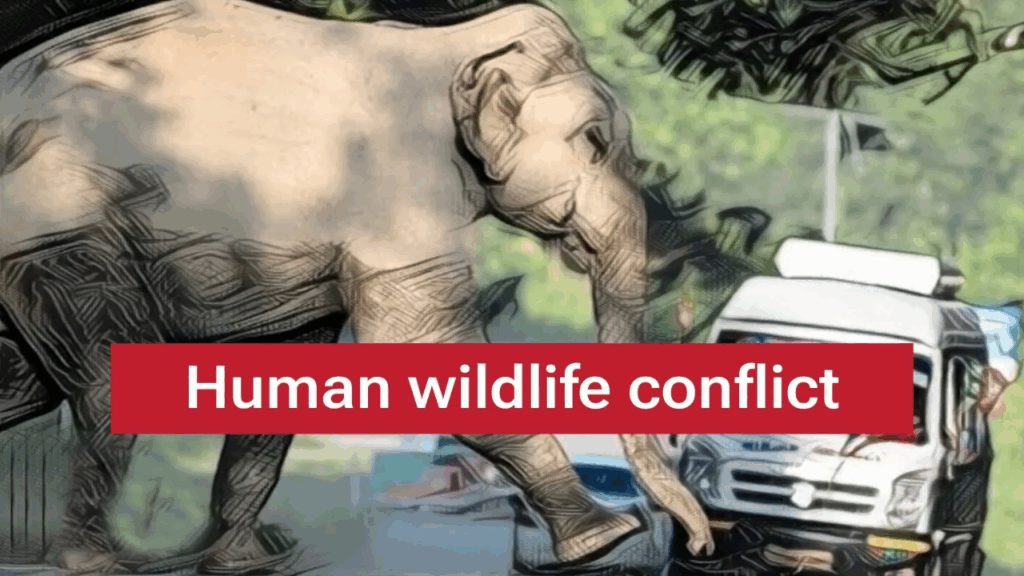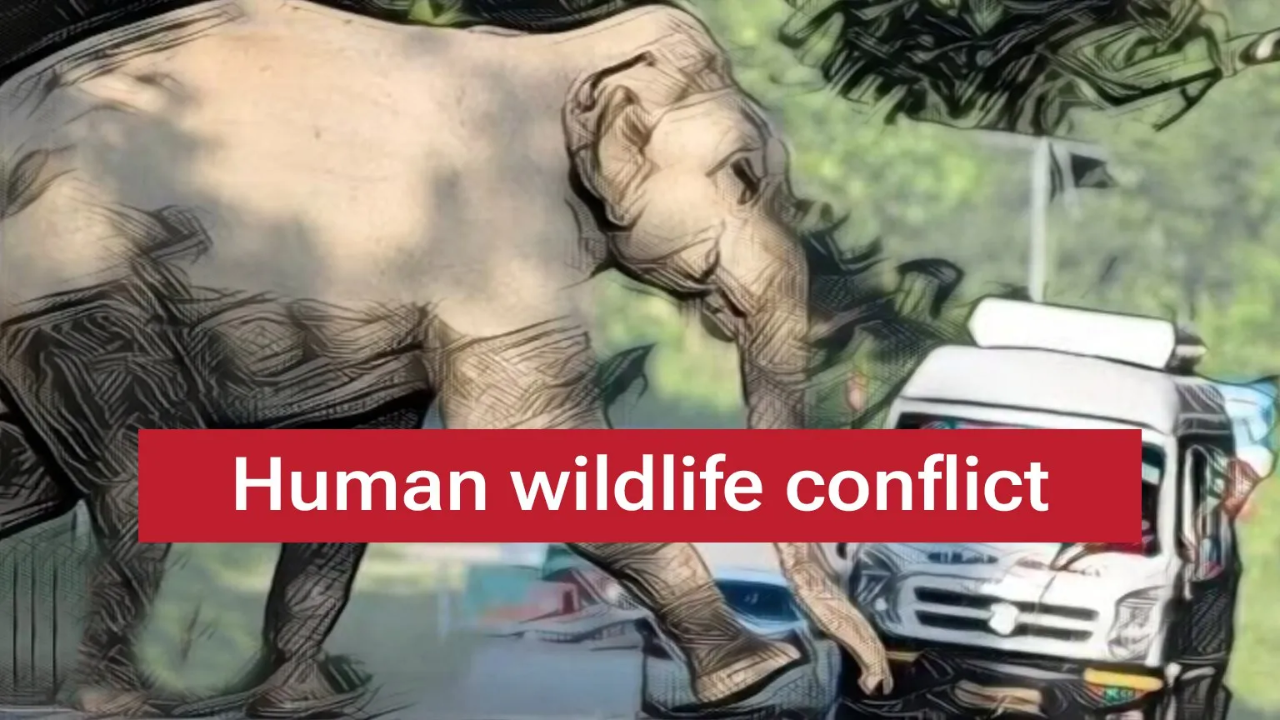
Human-wildlife conflict (HWC) has emerged as one of the most pressing challenges in conservation and governance. As human populations expand and natural habitats shrink, encounters between people and wildlife become more frequent and often violent. From crop raiding by elephants to livestock predation by big cats and even human casualties, these conflicts threaten biodiversity conservation as well as rural livelihoods. Effective legal and policy responses are therefore critical to balance conservation goals with human safety and welfare.
Understanding Human-Wildlife Conflict
Human-wildlife conflict refers to negative interactions between humans and wild animals that result in harm to people, property, livestock, or wildlife itself. In India, the issue is particularly acute due to:
- Population Pressure: Expanding settlements near forests.
- Habitat Fragmentation: Deforestation, mining, and infrastructure projects encroach into wildlife habitats.
- Climate Change: Altered migration patterns and scarcity of resources force animals closer to human habitations.
- Agriculture Expansion: Forest edges converted into farmland attract herbivores.
Major Types of Human-Wildlife Conflicts in India
- Crop Damage: Elephants, wild boars, and nilgai destroy farmlands.
- Livestock Predation: Tigers, leopards, and wolves attack cattle and goats.
- Human Casualties: Snakebites, leopard attacks, and elephant trampling are common.
- Retaliatory Killings: Communities often kill wildlife in revenge, harming conservation goals.
Legal Framework Addressing Human-Wildlife Conflict
India has enacted strong environmental laws, but balancing conservation with human needs remains complex.
- Wildlife Protection Act, 1972
- Provides legal protection to endangered species.
- Permits killing of problematic animals only under strict circumstances.
- Establishes sanctuaries and national parks.
- Indian Forest Act, 1927 and Forest Rights Act, 2006
- Regulate human access to forests.
- Recognize rights of forest-dwelling communities while ensuring conservation.
- Environment Protection Act, 1986
- Broad authority to take measures for protecting ecological systems.
- Compensation Schemes by State Governments
- Provide financial aid for crop damage, livestock loss, and human injury or death caused by wildlife.
- National Wildlife Action Plan (2017–2031)
- Focuses on mitigation strategies like habitat improvement, awareness, and coexistence models.
Policy Responses to Human-Wildlife Conflict
- Compensation Mechanisms: Streamlined payment for losses suffered by farmers reduces retaliatory killings.
- Habitat Management: Creation of wildlife corridors, waterholes, and buffer zones to reduce intrusion into villages.
- Community Participation: Involving local communities in conservation ensures cooperation and awareness.
- Early Warning Systems: Technology such as GPS collars on elephants and SMS alerts for villagers.
- Eco-Development Programs: Providing alternative livelihoods to reduce dependence on forests.
- Awareness and Education: Training communities on safe practices and conflict mitigation.
Comparative Table: Legal and Policy Approaches
| Law/Policy | Objective | Key Provisions | Impact on Conflict Mitigation |
|---|---|---|---|
| Wildlife Protection Act, 1972 | Protect species and regulate interactions | Restricts hunting; allows control of problem animals | Ensures species survival but causes friction |
| Forest Rights Act, 2006 | Recognize community rights | Grants land/forest access to locals | Helps coexistence but may intensify conflicts |
| Compensation Schemes | Reduce economic loss for villagers | Crop/livestock loss compensation | Reduces retaliatory killings |
| National Wildlife Action Plan | Holistic conservation and conflict management | Corridors, eco-development, awareness | Long-term strategy for coexistence |
| State Policies & Tech Initiatives | Localized conflict response | SMS alerts, elephant squads, insurance schemes | Improves immediate response to conflicts |
Challenges in Legal and Policy Implementation
- Delayed Compensation: Farmers often face bureaucratic hurdles in receiving aid.
- Insufficient Awareness: Lack of knowledge about legal rights and safety practices.
- Retaliatory Killings: Despite laws, communities often take matters into their own hands.
- Habitat Loss: Legal frameworks are ineffective without addressing deforestation and infrastructure pressures.
- Weak Enforcement: Limited staff and resources hinder effective implementation.
Overview Table
| Aspect | Importance | Legal/Policy Support | Challenges Remaining |
|---|---|---|---|
| Species Protection | Conserves endangered animals | Wildlife Protection Act, 1972 | Human safety concerns |
| Community Rights | Balances people-forest relationship | Forest Rights Act, 2006 | Conflict due to over-dependence |
| Compensation Systems | Reduces economic burden | State Compensation Schemes | Delays and inadequate funds |
| Habitat Corridors | Prevents animal intrusion | National Wildlife Action Plan | Land acquisition issues |
| Technology Use | Reduces surprise encounters | GPS tracking, SMS alerts | Limited coverage in remote areas |
Way Forward
To effectively address human-wildlife conflict, India needs an integrated approach:
- Faster and fairer compensation systems.
- Strengthening corridors and buffer zones to maintain ecological connectivity.
- Greater investment in technology for monitoring and early warnings.
- Community-centered approaches that combine conservation with livelihood support.
- Stronger enforcement of anti-poaching and anti-retaliation laws.
Ultimately, human-wildlife conflict is not merely a conservation issue but a socio-economic and governance challenge. Laws and policies must evolve to foster coexistence, ensuring that both people and wildlife thrive.
FAQs
Q1. What is the main cause of human-wildlife conflict in India?
It arises from habitat loss, deforestation, and human expansion into forest areas.
Q2. Which law primarily governs wildlife protection in India?
The Wildlife Protection Act, 1972 is the key legislation for conserving and managing wildlife.
Q3. How can technology help reduce human-wildlife conflict?
GPS tracking, SMS alerts, and early warning systems can prevent surprise encounters and minimize risks.

